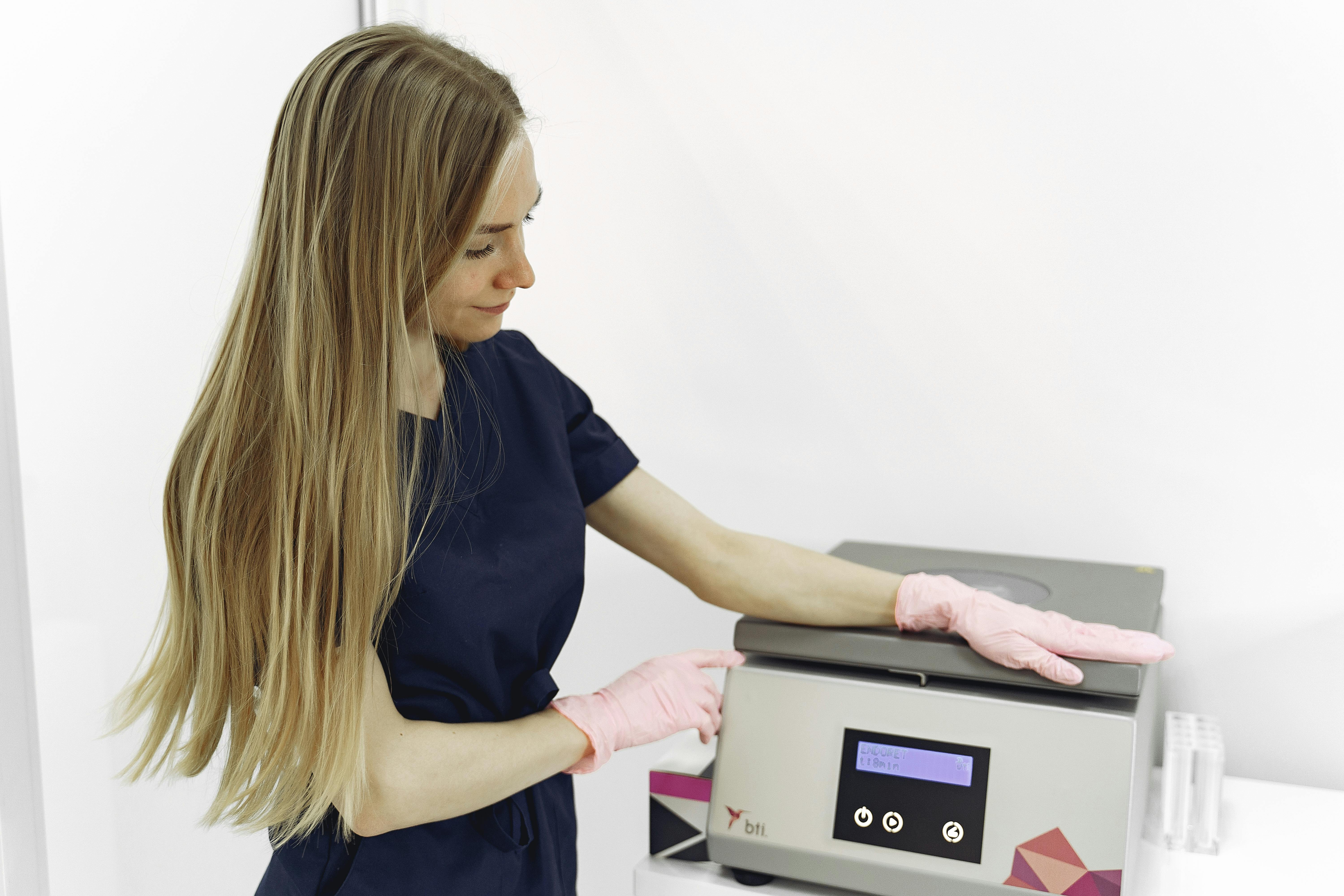How Long Should You Wear Compression Gloves

Compression gloves provide a range of benefits for people with medical conditions and athletes alike. They are designed to increase circulation, reduce swelling, and provide support to the wrist and hands. Many people wonder how long they should wear compression gloves for maximum benefit. The answer to this question varies depending on the condition being treated, the type of glove being used, and the individual wearing the glove. This article will provide an overview of how long you should wear compression gloves for optimal results.The benefits of wearing compression gloves are numerous. Compression gloves help to improve circulation and reduce swelling in the hands while providing warmth and support to the tendons and muscles. They can help relieve pain associated with carpal tunnel syndrome, arthritis, and hand fatigue, as well as help reduce the risk of developing issues such as Raynaud’s Syndrome. Compression gloves also provide a gentle massage-like feeling that can help relax muscles and reduce hand stress during repetitive tasks. Additionally, they can improve grip strength and dexterity for those with poor circulation or nerve damage. Finally, compression gloves provide protection from cold temperatures, dust, dirt, and other environmental hazards.
Different Types of Compression Gloves
Compression gloves are a type of medical device that are designed to provide support and relief to individuals suffering from various medical conditions. These gloves can be used for a variety of different conditions, such as carpal tunnel syndrome, arthritis, and Raynaud’s disease. Compression gloves can be made from a variety of materials, including Lycra, spandex, neoprene, and nylon. Each material provides different levels of compression, which is important for individuals with various medical needs.
One type of compression glove is called a graduated compression glove. This type of glove provides the most support and relief by providing gradual pressure on the hands and wrists. The pressure increases as it goes up the arm and provides steady compression throughout the hand and wrist area. This type of glove is often used to treat carpal tunnel syndrome or to provide relief from inflammation caused by arthritis.
Another type of compression glove is known as an elastic compression glove. This type of glove is designed to provide uniform pressure throughout the hand and wrist area without any additional support or pressure points. The elastic in these gloves stretches as needed to provide a comfortable fit while providing support at the same time. These types of gloves are often used for conditions such as tendonitis or Raynaud’s disease.
A third type of compression glove is called a wrist-supporting compression glove. This type of glove provides extra support for the wrist while also providing uniform pressure throughout the hand and wrist area. These gloves typically feature an adjustable strap that allows for personalized fit and comfort while providing necessary support for those with weak wrists or tendons. These types of gloves are often used by athletes or persons who perform repetitive motion tasks with their hands or wrists on a regular basis.
In conclusion, there are several different types of compression gloves available to meet the needs of individuals suffering from various medical conditions or performing demanding activities with their hands or wrists on a regular basis. Each type offers different levels of support depending on your individual needs, so it’s important to speak with your doctor if you have any questions about which might be right for you.
Compression Gloves: What Are They?
Compression gloves are a type of medical device designed to help alleviate the symptoms of conditions such as arthritis, carpal tunnel syndrome, and other hand and wrist pain. They provide support and improved blood circulation to the hands and wrists, reducing inflammation and pain. Compression gloves are usually made from breathable materials such as spandex, neoprene, or lycra. They can be worn during activities such as typing or using a mouse to reduce stress on the hands and wrists.
Tips for Choosing the Right Compression Gloves
When choosing compression gloves, it’s important to consider the level of compression needed for your particular condition. Different levels of compression offer varying levels of support and can be tailored to specific needs. Additionally, some compression gloves come with adjustable straps to ensure a comfortable fit that won’t slip during activities. It’s also important to choose a glove made from breathable material that won’t trap heat and cause discomfort. Lastly, make sure that the glove fits properly with no extra space in the fingers or wrist area for optimal comfort and support.
In conclusion, when shopping for compression gloves it’s important to consider the level of compression needed along with comfort features like adjustable straps and breathable materials. Taking these factors into account will ensure that you get the best possible glove for your needs.
How to Measure for the Right Fit
When shopping for clothing, it is important to measure yourself correctly in order to ensure the items you buy fit properly. Taking accurate measurements of your body will help you determine what size clothing will fit you best and make shopping much easier. Here are some tips on how to measure for the right fit when buying clothes.
The first step in measuring for clothing is to measure your waist. To do this, simply wrap a tape measure around your waist at the narrowest point and take a measurement. You should also measure your hips as well, which can be done by wrapping the tape measure around the fullest part of your hips and taking a measurement.
It is also important to take measurements of your chest, arms, and legs. To measure your chest, wrap the tape measure around the fullest part of your chest and take a measurement. For arms, wrap the tape measure around the fullest part of your upper arm and take a measurement. When it comes to measuring your legs, you will want to pull up a pair of pants that fit you well and use them as a guide for measuring both legs.
Once you have taken all of these measurements, it is time to compare them with clothing size charts or labels found on garments that interest you. Clothing sizes can vary greatly from store-to-store or even within one store’s offerings so it’s important to read each label carefully before making any purchases. If possible, try on garments before purchasing them as well.
By following these steps when measuring yourself for clothing, you can ensure that any garment you purchase fits properly and looks great on you!
How to Put On Compression Gloves
Compression gloves can be a great aid in relieving hand pain associated with arthritis, carpal tunnel syndrome, and other medical conditions. They provide gentle pressure to your hands, helping reduce swelling and discomfort. Putting on compression gloves is a relatively simple process. Here are some tips for doing it correctly:
1. Locate the thumbhole in the glove and slide your thumb through it. Make sure the thumbhole is facing forward and that your thumb is resting on top of the material.
2. Place your four fingers into the remaining holes in the glove with your palm facing up. Gently pull the glove up along your arm until it fits snugly but comfortably around your wrist.
3. Once you have put on both gloves, adjust them so that they are even all around your hand and wrist area. Pull down gently to make sure they are fitted properly but not too tight or loose-fitting.
4. To ensure that you get maximum benefit from wearing compression gloves, make sure to wear them for at least three hours a day, or as advised by your doctor or physical therapist if you have an underlying medical condition that requires specialized care.
Putting on compression gloves may take some practice but once you get used to it, it will become second nature! Compression gloves can provide much needed relief from pain and discomfort associated with certain medical conditions – just make sure to follow these instructions carefully so you can get the most out of them!

Can I Wear Compression Gloves for the Same Duration as Compression Socks?
When considering the use of compression gloves alongside compression socks, it’s important to note that the optimal duration for compression socks typically ranges from 8 to 12 hours daily. While compression gloves can be worn, monitoring comfort and effectiveness is essential for maintaining circulation and preventing discomfort.
Benefits of Wearing Compression Gloves Overnight
Compression gloves are becoming increasingly popular as a way to soothe tired and aching hands, especially for those who suffer from arthritis or carpal tunnel syndrome. Wearing compression gloves overnight can provide several benefits, such as improved circulation, reduced swelling, and better sleep.
The most immediate benefit of wearing compression gloves overnight is improved circulation to the hands. Compression gloves apply pressure to the hands, helping to improve blood flow. This helps reduce swelling and inflammation, allowing for better movement in the hands and wrists during the day.
The improved circulation also helps reduce pain in the hands, especially for those with conditions like arthritis or carpal tunnel syndrome. The added pressure helps reduce pressure on nerves and joints that can cause discomfort and pain. Compression gloves can also help reduce muscle soreness in the hands by helping to relax tight muscles throughout the night.
Wearing compression gloves overnight can also help improve sleep quality. The added pressure on the wrists helps relax muscles throughout the body, which can lead to a more restful sleep. This is especially beneficial for those with chronic pain or discomfort in their hands or wrists that might make it difficult to get comfortable at night.
Overall, wearing compression gloves overnight can provide several benefits for those suffering from hand issues or discomfort in their wrists or fingers. The improved circulation helps reduce swelling and inflammation while providing relief from pain caused by conditions like arthritis or carpal tunnel syndrome. Additionally, it can help improve sleep quality by relaxing muscles throughout the body which leads to a more restful night’s sleep.
How Long Should You Wear Compression Gloves During the Daytime?
Compression gloves are a popular choice among those who suffer from pain and discomfort in their hands, wrists, and fingers. Wearing compression gloves during the day can help to reduce inflammation and swelling, improve circulation, and ease any stiffness or pain. But how long should you wear them?
The duration of time that you should wear compression gloves during the day will depend on your own individual needs. In general, it is recommended that you wear them for at least two hours a day, but this can vary depending on your condition. If you suffer from chronic pain or discomfort, then it is best to consult with your doctor or physical therapist about how long you should wear your gloves for.
If you are using compression gloves to help with swelling and inflammation, then it is best to wear them as long as possible throughout the day. This will help to reduce the swelling and provide relief for any discomfort or pain. If your condition requires more frequent use of compression gloves then it may be necessary to wear them for longer periods each day.
When wearing compression gloves for any length of time during the day, make sure that they fit properly and are not too tight. Also make sure that they are not causing any additional discomfort or irritation. If they do cause discomfort then consider switching out for a different pair or look into purchasing a larger size if necessary.
Overall, the length of time that you should wear compression gloves during the day will depend on your individual needs and health condition. It is important to consult with your doctor or physical therapist about how long is best for you before making any changes in usage times.
Potential Risks of Wearing Compression Gloves for Long Periods of Time
Compression gloves are popular among athletes, musicians, and those who suffer from poor circulation or nerve damage. While these gloves may provide relief from muscle aches and pains, wearing them for extended periods can lead to potential health risks. The prolonged use of compression gloves can cause nerve compression, an uncomfortable feeling caused by prolonged pressure on the nerves. This can lead to numbness, tingling sensations, and pain in the hands and fingers. In some cases, overuse of compression gloves may even lead to carpal tunnel syndrome.
In addition to nerve compression, wearing compression gloves for a prolonged period can also lead to decreased circulation in the hands and fingers. This decreased circulation can cause a decrease in oxygen supply to the hands which can further aggravate any existing muscle pain or inflammation. The lack of oxygen can also make it harder for the body’s natural healing process to take place.
Compression gloves may also lead to increased skin irritation in those who wear them over long periods of time. The tight fit of the gloves can cause rubbing and chafing on the skin which could lead to irritation or even rashes if not properly managed. In extreme cases, prolonged use of compression gloves may even cause skin necrosis which is when tissue death occurs due to lack of blood supply or oxygenation.
Finally, wearing compression gloves for too long may also weaken hand muscles over time as they are not allowed to move freely while using them. This weakening could make it harder for an individual to perform everyday tasks that require manual dexterity such as writing or typing on a computer keyboard.
Overall, while compression gloves offer many benefits such as alleviating muscle aches and pains, it is important to understand that they should not be worn for extended periods as there are potential risks associated with their use. It is important that individuals take precautions such as removing them after a few hours of usage or consulting a doctor before using them if they have any existing medical conditions that could be exacerbated by their use.

Conclusion
Compression gloves are a useful tool for people who suffer from hand conditions such as carpal tunnel syndrome and arthritis. They can provide relief from pain and swelling, while also helping to improve circulation. The length of time you should wear compression gloves will depend on the severity of your condition and the advice given by your doctor or health professional. Generally speaking, you should wear compression gloves for at least 6-8 hours a day for optimal results. If you experience any discomfort or irritation while wearing the gloves, it is best to stop wearing them immediately and consult with your doctor.
Overall, compression gloves are an effective way to manage hand conditions and can help to reduce pain and inflammation. However, it is important that you follow your doctor’s advice when determining how long you should wear them for. With proper use, compression gloves can help improve the quality of life of those suffering from hand conditions.
